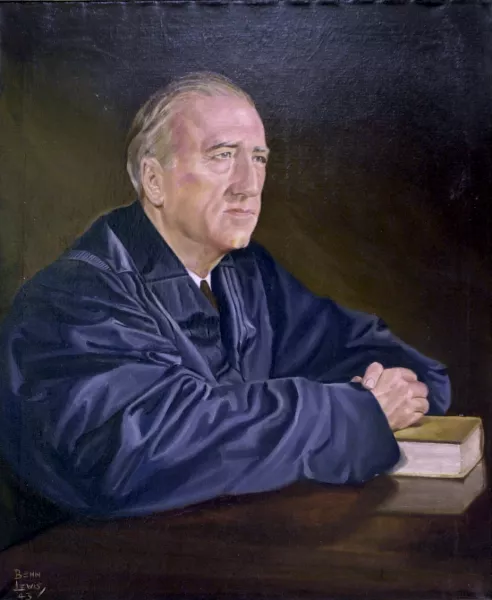12 Heathwood Circle
James F. Byrnes House
U.S. Senator, Supreme Court Justice, Secretary of State, Congressman, and Governor of South Carolina, James “Jimmy” F. Byrnes was considered by many to be a “modern-day Calhoun.” Byrnes, a Democrat, gained recognition as a national leader and an instrumental member of the Roosevelt and Truman administrations. Later, as governor, Byrnes was an advocate of the “separate but equal” policy. When he crossed party lines, Byrnes became a key factor in the reemergence of the Republican Party in the South. While living in Heathwood, the Byrnes family entertained such notable persons as President Richard Nixon and journalist Edward R. Murrow.
James F. Byrnes
Born in Charleston in 1882 and raised by his mother, Jimmy Byrnes began working toward his political career at a young age when he left school to work at a local law firm to help support his family. Appointed as a clerk to a local judge, Byrnes was licensed to practice law by 1904 and elected as a circuit court solicitor in 1908 where he spent a portion of the year in Columbia assisting with bill drafting. Solid political connections in place, Byrnes was elected to the U.S. House of Representatives where he served for fourteen years.
In 1924, Bynes lost a bid for a seat in the United States Senate but returned in 1930 to defeat Senator Cole L. Blease. A staunch supporter of President Franklin D. Roosevelt and the New Deal, Byrnes resigned from his Senate seat in 1941 when appointed as an associate justice of the U.S. Supreme Court. Resigning from this position in 1942, Byrnes was appointed by Roosevelt as the director of the Office of Economic Stabilization and, later, director of war mobilization. Following Roosevelt’s death, Byrnes served as U.S. Secretary of State under the Truman administration. Eventual disagreements regarding foreign policy led Byrnes to resign from this position in 1947.
As governor of South Carolina in 1951 though 1955, Byrnes proposed reforms centered on acquiring funds for the state hospital for the mentally ill as well as supporting the “separate but equal’ policy. Growing more and more distant from the Democratic Party, supporting Dwight D. Eisenhower and Richard M. Nixon, both Republican candidates, Byrnes officially crossed party lines in 1960. This shift in support of the Republican Party is considered by many to be a key factor in the party’s becoming re-energized in the American South. Remembered as a great leader for state and country, Byrnes, a Heathwood resident since 1955, died on April 9, 1972.

